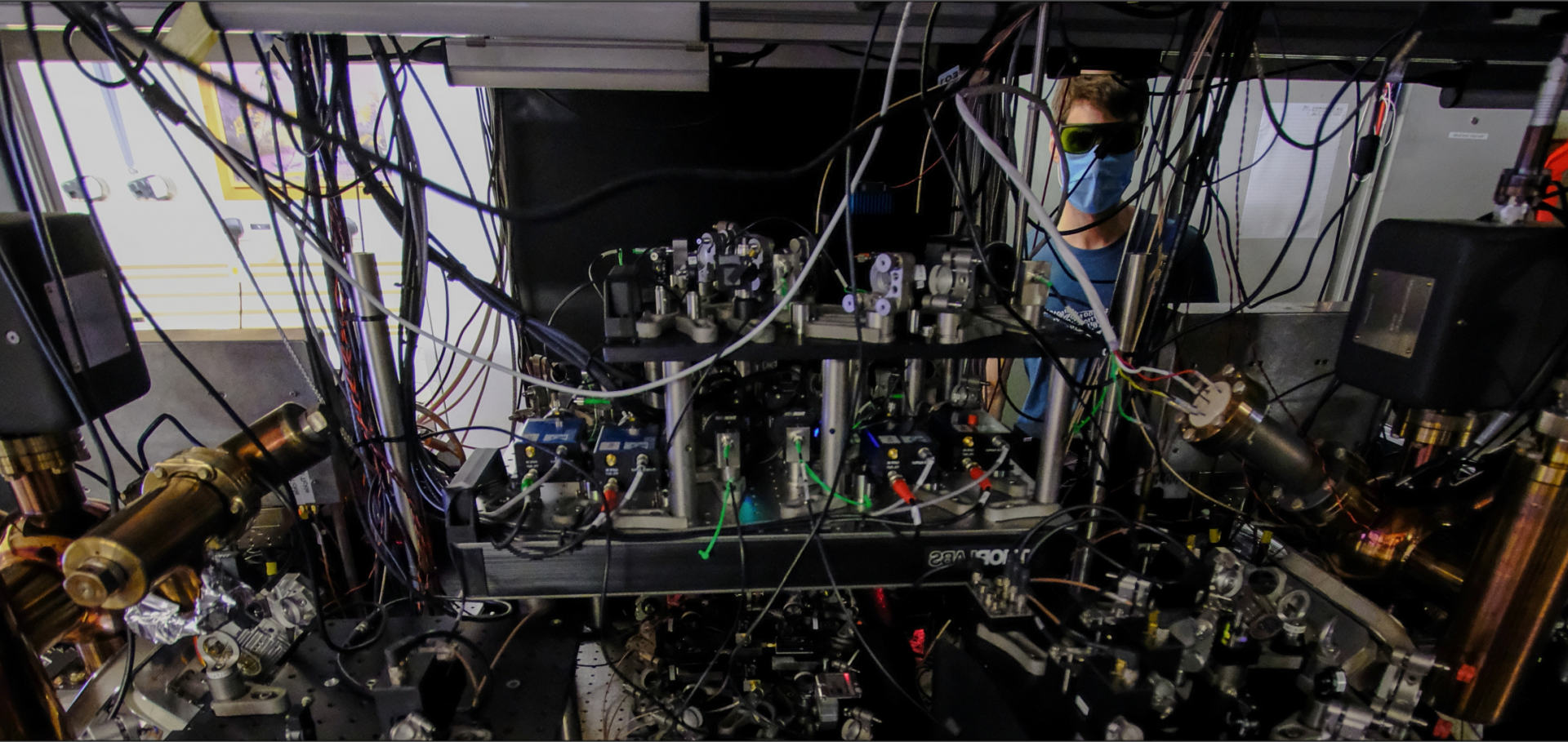Networking Trapped-ion Quantum Computers
Atomic-Scale Structure of the Hematite α‑Fe2O3(11̅02) “R-Cut” Surface
Blind quantum computing with trapped ions and single photons
Abstract:
Verifiable blind quantum computing enables a client to delegate computations while hiding their data and even the underlying algorithm from the cloud server. Because quantum information cannot be copied and measurements irreversibly change the quantum state, information stored in these systems can be protected with unconditional security, and incorrect operation of the server or attempted attacks can be detected. In this thesis, we report the first hybrid matter-photon implementation of verifiable blind quantum computing.
Our experimental platform consists of a trapped-ion quantum server and a client-side photonic detection system networked via a fibre-optic quantum link. We integrate a long-lived memory qubit into a trapped-ion quantum network node to enable simultaneous storage and manipulation of multiple entangled states across a network of quantum processors. We perform laser-based quantum gates between a ⁸⁸Sr⁺ and a ⁴³Ca⁺ ion with 0.961(2) fidelity, and between two ⁴³Ca⁺ ions with 0.985(5) fidelity. Ion-photon entanglement generated with a network qubit in ⁸⁸Sr⁺ is transferred to ⁴³Ca⁺ with 0.977(7) fidelity using error detection. We show that the fidelity of ion-photon entanglement decays ∼70 times slower on a memory qubit in ⁴³Ca⁺ than on the network qubit. Using dynamical decoupling, ion transport and sympathetic cooling, we further extend the storage duration; we measure an ion-photon entanglement fidelity of 0.81(4) after 10 s. We demonstrate that subsequent ion-photon entanglement generation with ⁸⁸Sr⁺ has no effect on the fidelity of ion-photon entanglement previously transferred to the memory. Our apparatus enables deterministic feedforward control (as required for measurement-based blind quantum computing), supporting fast switching of polarisation measurement basis by the client and deterministic logic gates between the network and the memory qubit in the server. We perform blind computations on linear cluster states and measure error rates surpassing a recently-discovered threshold for secure and robust verification. We quantify the privacy of this system at ⪝0.03 leaked classical bits per qubit in the cluster state. These results show a clear path to scalable and verified universal quantum computing in the cloud, which has wide-ranging applications in areas where confidentiality and verifiability are paramount, such as healthcare, finance, and defence.


